Excerpts from Jim Conrad's
Naturalist Newsletter
Entry dated January 1, 2024, issued from near Tequisquiapan; elevation about 1,900m, (6200 ft), ~N20.57°, ~W99.89°; Querétaro state, MÉXICO
GRISEBACH'S BRISTLEGRASS
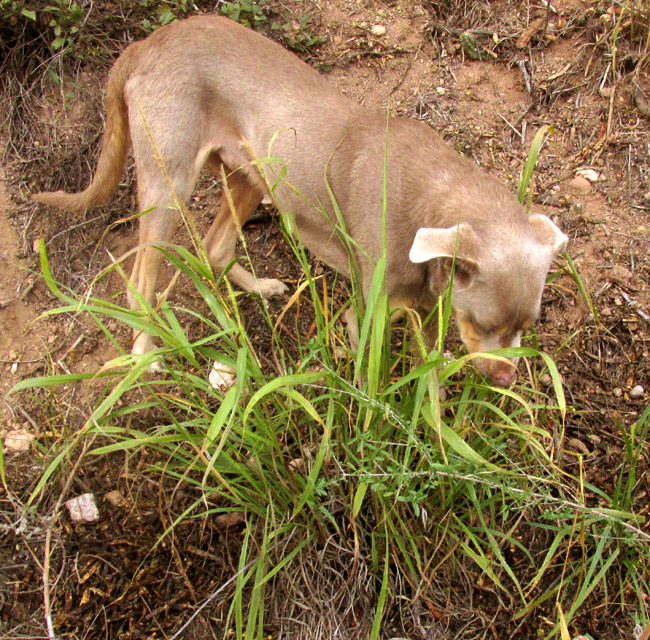
During a continuing two-year drought which the North American Drought Monitor classifies as D3 Extreme, the above obviously drought-tolerant grass grew on the usually shaded floor of a ravine that rarely floods but otherwise is dry -- a barranca. The barranca cut through compacted volcanic ash, or tuff. Chico the dog chose this grass to eat because the scratchy-feeling blades' microscopic barbs might help expel his parasitic intestinal worms -- a traditional worm treatment known by all Mexican street-dogs. The grass's slender, erect, spike-like inflorescences are most visible beneath Chico's slender belly.
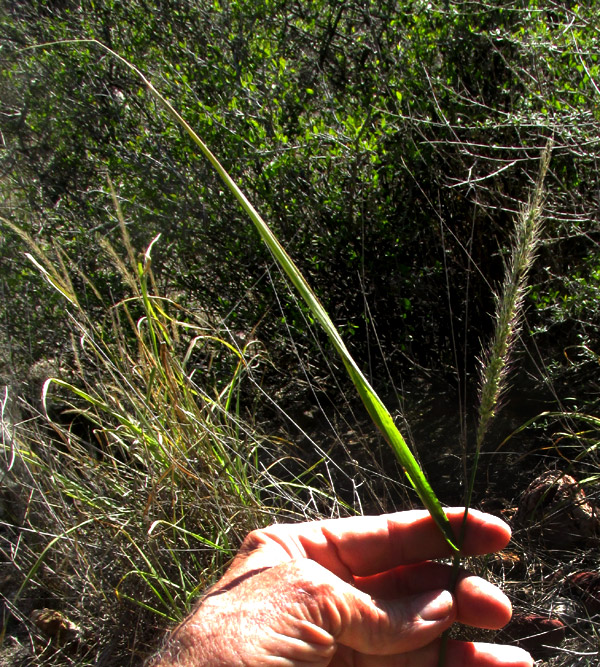
The grass's inflorescences bristled with upward-directed bristles, and gradually tapered to a slenderer tip.
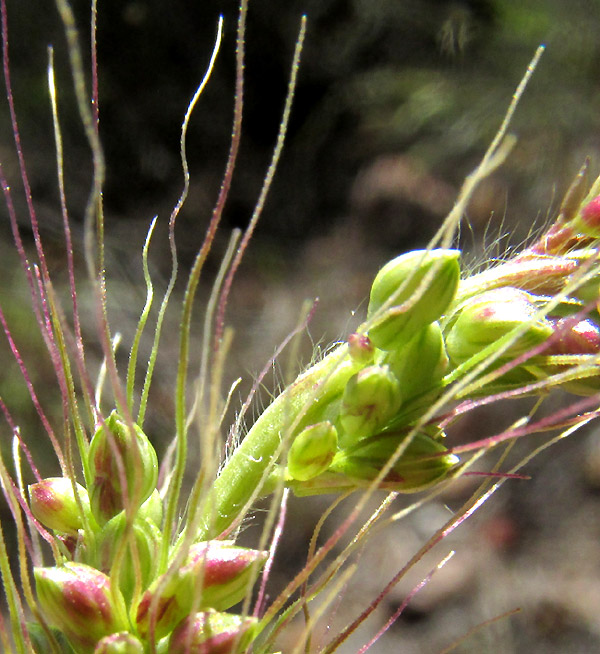
The inflorescence's main axis, its rachis, was long-hairy, Spikelets grew in small clusters on branched stalks, so the inflorescences were panicles, not true spikes. Some spikelets were tinted rose-purple in places. Each spikelet usually was subtended by one long, stiff bristle. At this point, seeing egg-shaped spikelets composed of a single floret, and arising below each spikelet a conspicuous, stiff bristle, already a commonly occurring genus is recognized: the genus Setaria, whose species often are known as foxtail or bristle grasses. Worldwide, up to nearly 200 Setaria species are recognized.
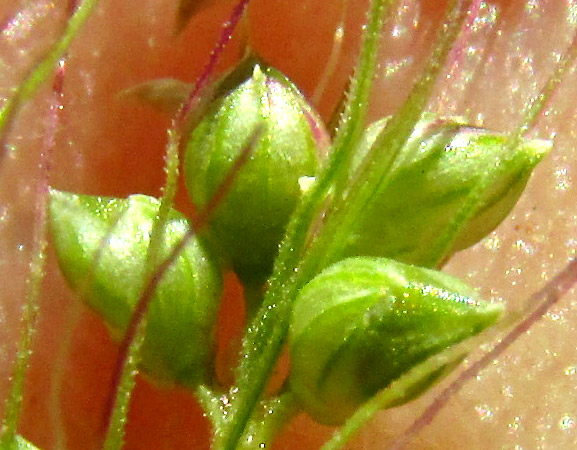
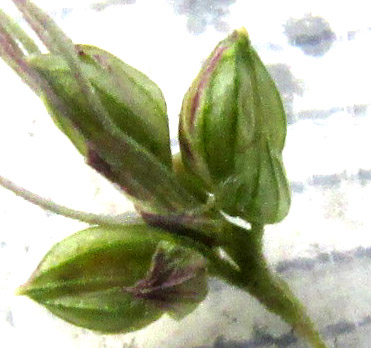
Above, the bristles are seen to bear very tiny, upward-directed projections; on some species the projections slant backwards. At the right, three spikelets appear above a ruler with millimeter marks. The spikelets are not quite 2mm long (1/16inch), which is smallish for Setaria spikelets, and that's a critical feature separating this species from others.
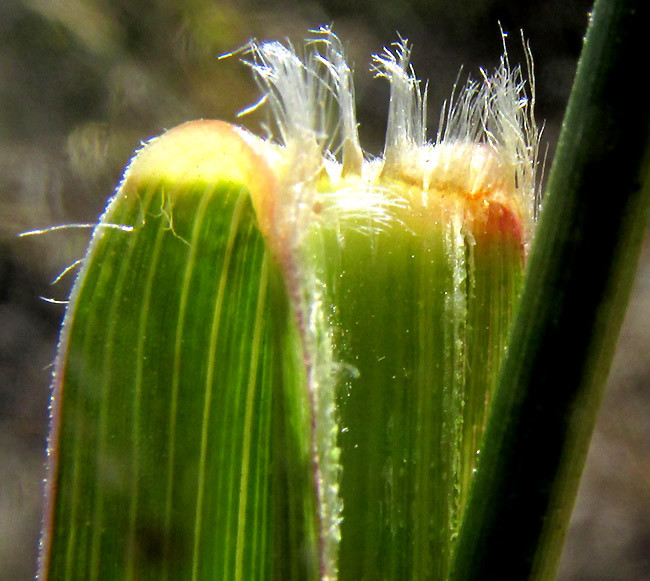
Ligules arising where blades joined the stems, atop the sheathes, consisted of white "ciliate hairs." It's interesting how groups of hairs joined at their bases
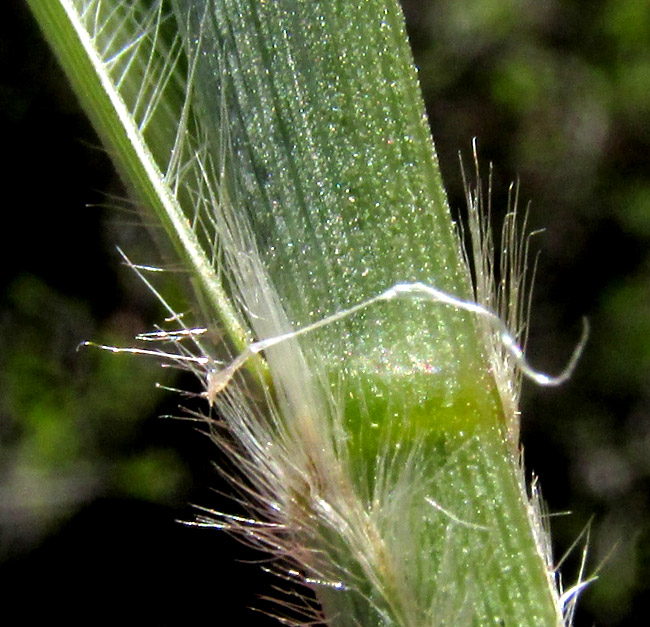
Long hairs clustered where grass-blade sheath bases connected with stem nodes.
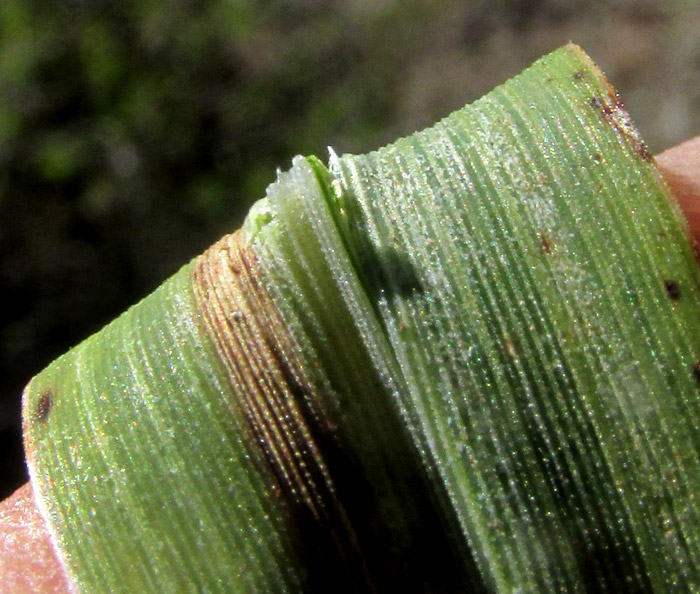
Above it's seen that grass-blade surfaces and margins were hairless, but the veins and edges bore sharp, microscopic projections, which appear as shiny points in the above photo. These were silica bodies, or phytoliths. Silica bodies occur in many forms, but our grass's bodies clearly were pointy-topped, causing blade surfaces to feel raspy and, maybe, when dogs eat the leaves, to dislodge intestinal worms or add fiber to their diets. The 2016 study by Clemon Dabney III and others entitled "A novel method to characterize silica bodies in grasses," tells us that, -- despite dogs snacking on them -- silica bodies may discourage herbivores from eating the blades, plus they protect against fungal infection, physical damage to the blades, and drought, and appear to be involved somehow with photosynthesis. Indicating the importance of silica bodies in grass blades, silica may contribute up to 10% of the dry mass of rice plants.
In this part of upland central Mexico, maybe about six Setaria species have been documented. Of those species, on the barbs on the bristles subtending the spikelets are upward-directed, plus the spikelets are oval and not oval-triangular, and they're less than 2.1mm long, you have SETARIA GRISEBACHII, often known as Grisebach's Bristlegrass.
Grisebach's Bristlegrass occurs on open ground and thin soils from the southwestern US south throughout Mexico into Honduras, then again in South America from Colombia to Ecuador. The Flora of North America regards it as "... the most widespread and abundant native annual species of Setaria in the south-western United States."
This species is similar to several others. In Texas we had Setaria sheeliei, a taxon reaching this far south and also sometimes appearing on steep, eroding banks. However, the rachises of that species' inflorescence aren't long-hairy like our plant's. Also there's Setaria marcrostachy, with spikelets averaging a little larger and of a slightly different shape that our grass's, and the inflorescences are less likely to taper toward the top. These are subtle differences, and one wonders whether some of the species are separate from one another.
I find no literature mentioning uses of Setaria grisebachii, one reason possibly being that few people distinguish it from similar species. However, some Setaria species are recognized as suitable as food for grazing livestock, either fresh or as hay or silage. Of course also they retard erosion and generate oxygen and contribute organic matter for soil health. Often small, seed-eating birds are seen snacking on the single seeds enveloped in the florets' cypsela-type fruits. Probably Chico the dog wasn't the only mammal in the area glad to swallow the leaves, for whatever the reason.
Griesebach's Bristlegrass was named to honor the German botanist and phytogeographer August Heinrich Rudolf Grisebach (1814-1879).